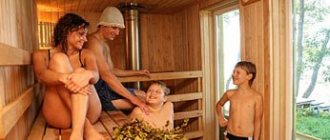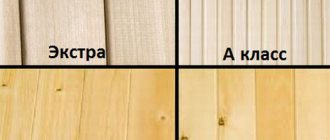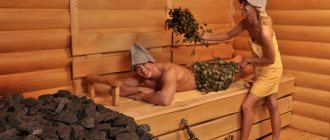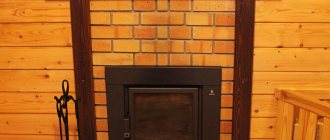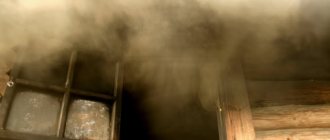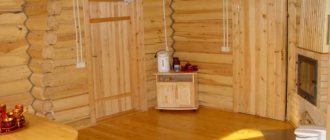Jumping out of the steam room and jumping into an ice hole or into scorching cold snow is an ancient national custom. Nowadays, lovers of contrasting procedures can cool down the heat in a swimming pool or a font with floating ice floes. But for the most desperate bath attendants this is not enough - they want space and snow rubdowns.
Today, such pleasures are available even in the city: some bathhouse complexes offer visitors to refresh themselves in the open air, creating both a lake with an ice hole and a real snowdrift in the yard. Of course, all this “works” only in winter. However, avid steamers can still cool off even in the height of summer. A real frosty surprise awaits them in the ice grottoes that have appeared in a number of baths and saunas. What kind of quirk?
Fixing a cold floor in a steam room
How to properly assemble a wooden floor in accordance with all technological standards and requirements? To do this, there are different methods to insulate the floor covering specifically for the conditions of a given room. Moreover, you can completely cope with certain methods on your own without the help of a specialist.
How to insulate a wooden floor?
To install a wooden floor structure, it is necessary to carry out the following types of work:
- Installation of cranial beams along the lower edges of the beams;
- Place a vapor barrier on top of the structure;
- Make a surface (canvas) for chipboard or OSB insulation;
- Place thermal insulation material between the beams;
- Place a waterproofing layer on top - depending on local climate conditions, it is recommended to select the required amount of insulation. As a standard, a thickness of 100-160 mm can be considered, including an additional layer of thermal insulation of up to 250 mm;
- Finishing the resulting structure with boards.
In order for the wooden coating to last for many years, it is recommended to treat it with a special protective layer of varnish, paint or other types of products. If all the steps are followed correctly, then as a result of multi-layer insulation it will be possible to protect the wood from the harmful effects of mold and bacteria, and also maintain the desired temperature in the steam room for a long time.
Many experts recommend installing ventilation under the floor. This helps prevent high humidity, but the flooring itself should not have gaps and allow air to pass through.
How to insulate a concrete floor?
Another type of coating in the bathhouse is concrete. To properly insulate a concrete floor, it is recommended to perform the following types of work:
- Experts use bitumen mastic as a waterproofing layer - applied 2-3 times. Before applying the next layer, you must wait until the previous one has dried;
- Next, an insulating coating and insulation are placed - bulk material in the form of expanded clay can be used as insulation;
- Then compact everything thoroughly, then place the reinforcing mesh and concrete it with a layer of mortar at least 3 cm thick;
- After the screed has dried, cover the floor with non-slip bath tiles.
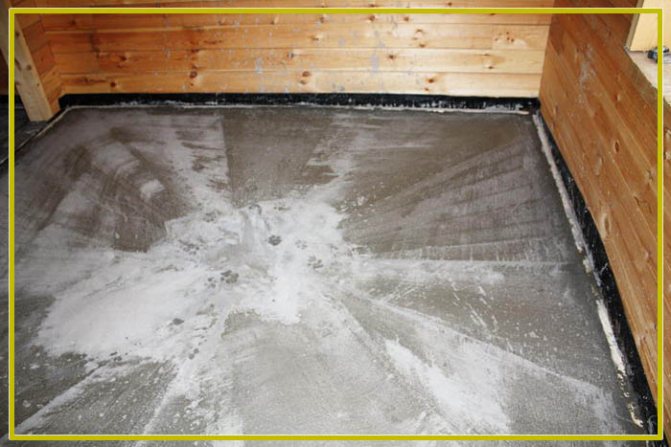
Another effective way to solve the problem with a cold floor is to organize a “warm floor” under the tiles. This solution will give the room not only warmth, but also comfort.
The surface of the concrete floor should not have cracks, chips or scratches - all defects must be repaired in advance with a cement mixture. It is important that the screed is smooth and uniform. The exception is the need for a slope for the drainage.
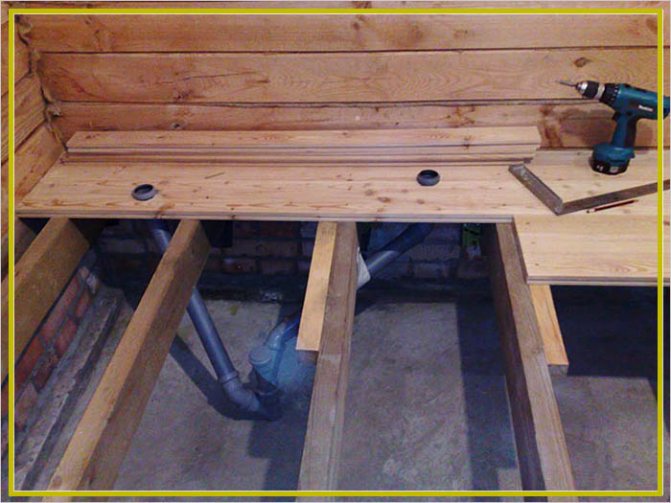
Since the washing room typically uses a large amount of water, it is necessary to drain it. What is required for this:
- The base of the floor should slope towards the low tide;
- Either one or several small holes can be used as a drain. If the hole and outlet are large, it is recommended to use a drain mesh;
- To prevent drafts and disgusting odors, a siphon must be installed in the drain channel.
It is also necessary to resolve the issue of water drainage, namely: install a sewer drain pipe, organize a receiver and a sump. All of the above work can greatly complicate the construction of a floor in a steam room or sink.
Another unpleasant surprise is suffocation.
Due to the high concentration of steam, little oxygen enters the blood, and the person begins to suffocate. Lips turn blue, fingertips go numb, chest hurts. The blood vessels constrict, making it difficult for air to enter the lungs. This is a very dangerous condition and requires immediate medical attention. Before the ambulance arrives, we take the victim out into the air and massage his neck, shoulders, and chest for fifteen minutes. You can pour cold water into a basin and lower the patient’s feet. It is very important to calm the person, so your actions should be clear, without excessive nervousness. Fainting often occurs as a result of overheating . What we do: we put the unfortunate person in the dressing room, raise his legs above his head, let him smell cotton wool with ammonia, if there is vodka, we rub his legs and arms. It’s unlikely that there will be mustard plasters in the bathhouse, but if there are, we put one on the back of the poor fellow’s head. We urgently call a doctor! You can avoid all of the above troubles if you follow simple rules:
- increase the duration of visits to the steam room gradually,
- focusing on well-being;
- do not lie on the top shelves;
- do not drink alcoholic beverages.
- When planning to take a steam bath, evaluate your capabilities: it is better not to go to the bathhouse if you have heart ailments, weak blood vessels, various tumors and some other ailments.
Are you in excellent health? Then enjoy the Russian bath, but don’t forget: everything is good in moderation.
Why is the floor in the bathhouse cold, but it’s hot upstairs?
What to do if the floor in the bathhouse is cold, but it’s hot upstairs
? Without finding the cause of a problem, it usually cannot be solved.
There are a considerable number of reasons why it is cold below and warm above, but the most common ones can be distinguished from the main ones:
- Poor air exchange in a steam room is a common cause of uneven air mixing. Ventilation helps solve the problem;
- There is no thermal insulation under the floor of the room - many people prefer not to install thermal insulation in rooms such as a steam room or a sink. Thus, the heat simply goes into the ground under the cold foundation, from where the cold returns to replace it;
- Poor quality of waterproofing. In the event of depressurization of the layers preventing moisture, the thermal insulation layer becomes wet, and therefore the material becomes unsuitable;
- When installing the floor, no air cushion was provided - the air gap can become a thermal insulating plug and prevent the floor from cooling. Its absence, as a rule, is fraught with consequences in the form of large heat loss.
Proper ventilation
Operating principle: when the incoming oxygen flow heats up, it begins to rise to the top, after which it cools down by thermal inertia and slowly falls back, and is utilized in the ventilation duct. This results in a balanced temperature level throughout the entire space inside the steam room.
In order to retain heat for as long as possible, it is recommended to install the hood low, and also take into account the ratio of the volume of the room to the cross-section of the openings.
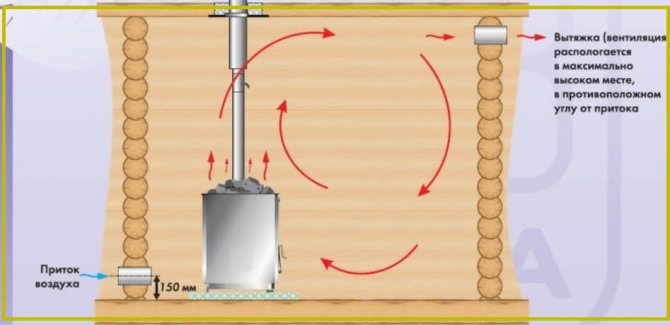
What other ways are there:
- If you can’t do everything as mentioned above, you can make an inflow near the stove at a low level on one wall, and make an exhaust hole (30-40 cm from the ceiling) opposite on the other;
- If the bathhouse has only one external wall, then it is necessary to place the inlet 30 cm from the floor surface, and the outlet 30 cm from the ceiling;
- With regular use of the bathhouse, you can use the stove vent as an exhaust vent, and make an exhaust hood on the opposite wall at the level of the brazier.
conclusions
Due to the peculiarities of the microclimate in the bathhouse, high humidity, temperature changes and constantly wet floors, maintaining heat inside is not so easy. Organizing base insulation will help solve the problem of heat preservation, which will not only maintain the necessary heat in the steam room, but also prevent destructive effects.
Also, due to regular temperature fluctuations, the floor covering shrinks - if it is concrete, or cracks - if the surface is made of wooden boards.
In addition, under such conditions, putrefactive formations and fungus often appear. Today there are no means that could protect wood one hundred percent, so bathhouse owners use various measures to prevent this kind of problem.
Also, the wooden underground must be equipped with natural ventilation, thereby cooling - relying on antiseptic impregnations or sealing alone does not make much sense, since they do not guarantee a long shelf life.
Helpful contrast
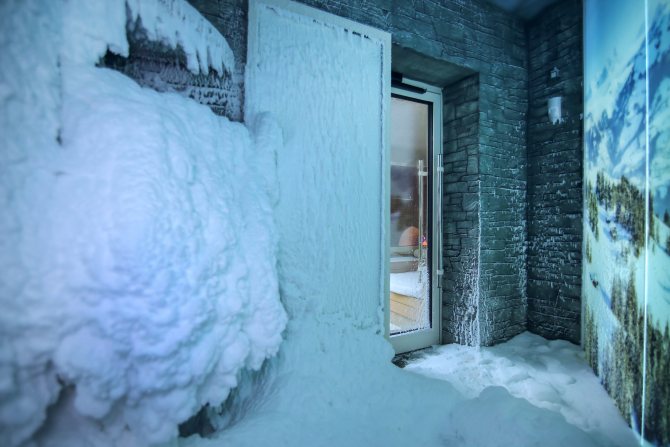
Cold stimulates blood circulation and microcirculation of lymph, improves metabolism and muscle tone.
The method of cooling in an ice grotto may seem unusual, but cold hardening is a long-standing tradition. Even in the Roman baths, citizens alternated visits to the frigidarium and the warm pool. Cold stimulates blood circulation and microcirculation of lymph, improves metabolism and muscle tone, quickly relieves pain, inflammation and swelling. It is no coincidence that after operations, childbirth and injuries, ice compresses are prescribed.
- How to swim in the font correctly? It’s better to combine it with a bathhouse!
Short-term exposure to low temperatures and walking barefoot in the snow increase the body's resistance, improve health, and rejuvenate the skin.
Cold is used to treat many diseases. Doctors use a cryosauna (cabin with nitrogen cooled to −130 degrees) to treat rheumatoid arthritis, osteochondrosis, eczema and psoriasis, chronic endocrine and autoimmune diseases. During the procedure, the patient’s skin is cooled to −2 degrees, which triggers recovery processes in the human body.
Therapist Igor Spirin claims that the method of hypothermia, that is, exposure to low temperatures, has a double effect in oncological diseases, increasing the effectiveness of chemotherapy and reducing its side effects.
Cryotherapy helps get rid of excess weight and cellulite - in two or three procedures you can lose up to 450 kilocalories. Visits to the ice grotto between visits to the steam room have a similar effect (especially if after the sauna you apply an anti-cellulite composition to your body, do a body wrap or massage).
- 20 things you shouldn't do in the sauna
Scientists have proven that speleotherapy (treatment in a cave) helps well with diseases of the bronchopulmonary system. The result is often more effective than with drug treatment. And the atmosphere in the snow room is as close as possible to the microclimate of a real grotto.
Contrast spa treatments strengthen the cardiovascular system and immunity to colds and viruses, and accelerate metabolic processes. In addition, adds neurologist Irina Savushkina, a sharp change in temperature stabilizes the emotional background, reduces muscle pain, increases resistance to stress and even improves self-esteem. Another benefit is the stimulation of hair follicles, which stops hair loss.
A visit to the ice grotto will charge you with vivacity and energy; an ice and snow “wash” relieves tension and fatigue, and takes away negative thoughts. But we must not forget that you don’t need to stay in the grotto for long: if you feel that you are starting to freeze, get out immediately. And, of course, before entering a frosty room, you need to warm up well.
Jacuzzi hits the kidneys
Such a pleasant procedure as swimming in a Jacuzzi bath can also pose a health hazard. German doctors have concluded that exposure to the powerful flow of water that forms the basis of the Jacuzzi effect may worsen some kidney diseases. In particular, with kidney stones, stones can “break loose” and cause renal colic or blockage of the ureters, and with glomerulonephritis, swimming in a Jacuzzi can even lead to kidney injury. People taking blood thinning medications also need to be careful. Such drugs increase the likelihood of internal bleeding, and against the backdrop of the powerful effects of water jets, this risk becomes even higher. In addition, some researchers claim that a hot tub is an ideal breeding ground for pathogenic bacteria. Unlike regular bathtubs, Jacuzzis have complex systems of internal air and water pipes. These “guts” are difficult to clean, and over time they accumulate germs that can cause infections of the genitourinary tract, skin and lungs.
Why does it feel bad after a bath and what ailments are possible?
Not everyone can stay in a closed, hot and humid room for a long time. Injecting heat and steam is nothing more than creating high temperatures and humidity. This is what provokes an increase in blood pressure, shortness of breath and weakness.
Even “super-seasoned” bathhouse attendants go out to rest, cool down, douse themselves with cool water, bathe in sauna fonts, and plunge into the coolness of the river.
Man is created from flesh and blood, our body has a limit to its capabilities. You should not try to set records for staying on a bath shelf. The first law of the bath is the alternation of heat and cold, mandatory contrasting water procedures.
